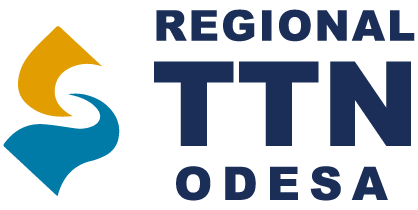The most common mistakes of startups from Eastern Europe on the US market. And how to avoid them
What are the most common mistakes of “our” startups in the USA, why it is important to find an American partner and how to make it work, said Andriy Komarovsky, CEO of the accelerator hub Sector X at UNIT.City.
 There is a completely classic installation of startups from Eastern Europe (although, most likely, startups from all over the world have it, but this is not accurate) that as soon as several hundred free money appeared, you should immediately move to the USA. Because billions will not earn themselves, and everyone has heard that it is in the United States that there are a lot of them and that’s enough for everyone.
There is a completely classic installation of startups from Eastern Europe (although, most likely, startups from all over the world have it, but this is not accurate) that as soon as several hundred free money appeared, you should immediately move to the USA. Because billions will not earn themselves, and everyone has heard that it is in the United States that there are a lot of them and that’s enough for everyone.
I’m not going to tell all kinds of nonsense here about the competitive competition that eats children for breakfast, and about how for five thousand dollars the poor Eastern European startup founders are bombing in the sewers of San Francisco. Let’s get down to business.
Why everybody wants in the USA
Motivations like this:
There are many investors. There are many customers. Everyone speaks good English. There you can sell your startup, after all. The USA is a good place.
But in reality, the number of our successful cases there is not amazing. Having lived in New York for many years, working on his startup, attending various coworking and demo days, he did not see the influx of guys with a heavy Eastern European accent. The Israelites, for example, saw. Why is that?
Because the guys with a heavy Eastern European accent plan their plans based on false assumptions:
- We have a cool product, better than the best, now we’ll come and sell!
- Not only is the product cool, it is also three times cheaper! We’ll sell it right now.
- And our team is fabulous: a beautiful data-Satanist and super-mathematics! Now we’ll raise a truck of money and sell it even more!
Everything above doesn’t work like that. It is unknown to anyone who does not need the best product (the risks of working with a new contractor outweigh), they also do not need three times cheaper (the risks of working with a new contractor outweigh + such a drop in price for similar quality seems dumb), investments under the technical team do not (well unless the team is the Nobel laureate).
How does the US market work
But this logic works (think – it brings results to the USA): first understand the CULTURE of the country and the business community, then FIND PARTNERS who will act as facilitators, PERSONALLY establish relationships with customers and only then rely on some kind of result.
The main difficulty in entering the US market is CULTURAL (the first point). This is a million things to navigate: when you need to smile, what to write, what words to use, what is important and what is not, etc. Culture allows you to distinguish your own from strangers. Adaptation to a foreign culture takes time – at least a year, although some do not have enough life (it depends on motivation and age when you start).
Therefore, an understanding of culture requires relocation. Without relocation, no one in the US will take seriously a project whose founders continue to live in the other half of the globe. But without relocation, the founders of some b2c projects, the founders of b2b projects who could find cofounders or partners in the USA who agreed to play the role of cofounder, can do without relocation. There are such cases, but they are quite rare.
A partner shares his reputation and drastically reduces the time that customers need to start trusting you.
Of course, start-ups are different. The general rule is this: the cheaper the product, the easier it is to sell to the customer, and vice versa – it will be very difficult to sell a product for 200,000 American money to a large corporation in the USA. And it works not only for the USA, of course.
Globally, except for any Thai exotic, there are b2b and there are b2c projects. It’s difficult and painful for the founders of each of these categories to enter the United States.
For b2b projects, the main thing is a deep understanding of the business processes of their industry and partnerships/market reputation. It is clear that a conditional Somali project that solves the problems of the Somali fintech will have an understanding of the processes of the American fintech near-zero, because the industries are very different. Some industries (for example, telecom and retail) do not differ so much around the world, and there the founders are easier. You can not even mention the reputation of local founders in the US market.
In the case of b2c-projects, the main thing is a deep understanding of the audience and trends. And since audiences in the USA are very different from audiences of the same gender and age and even financial composition of the home region, this means a lack of understanding of patterns of behavior, preferences, desires, etc.
And the final thought. You can remotely sell in the USA, but only some conditional spinners through Amazon, and something small for SaaS’s for small business for $ 500. Everything else – only personally and after spending a couple of years.
Source: ain.ua










